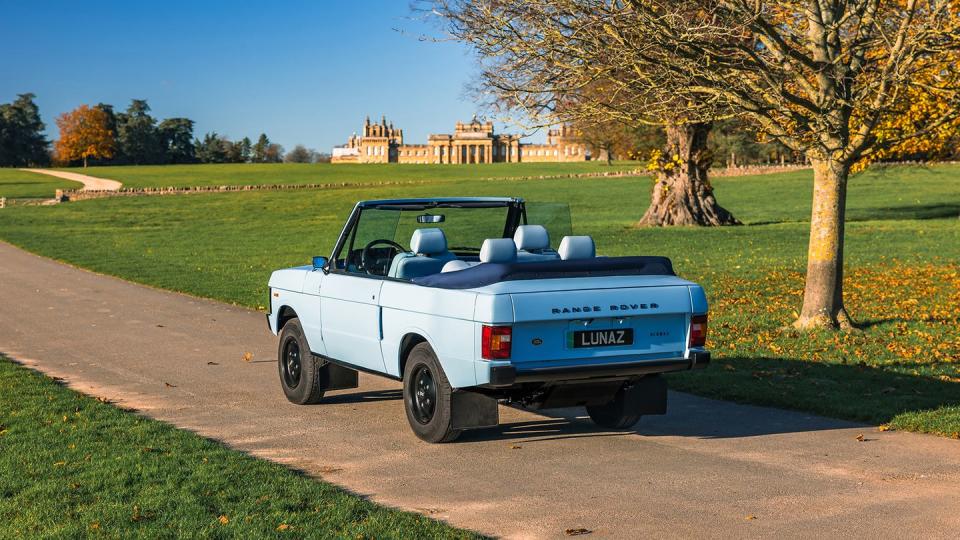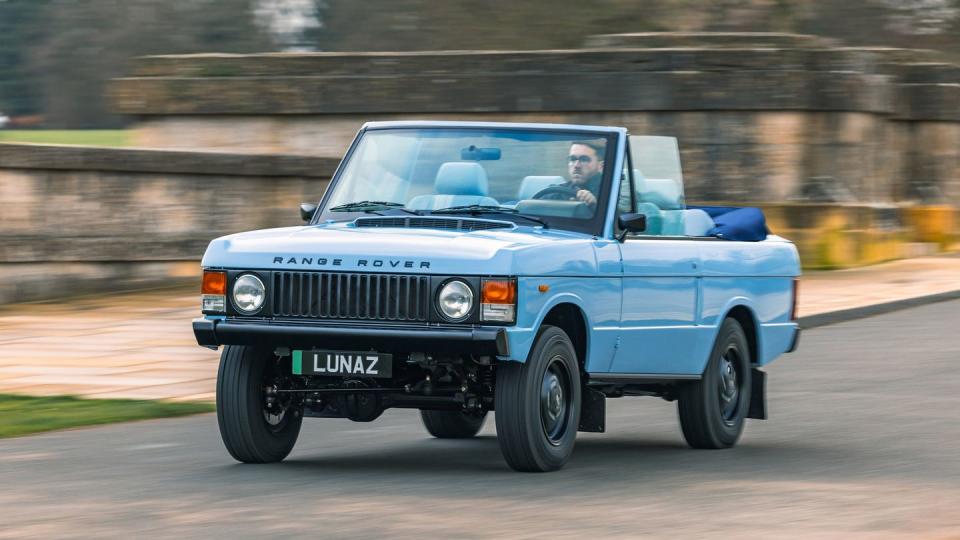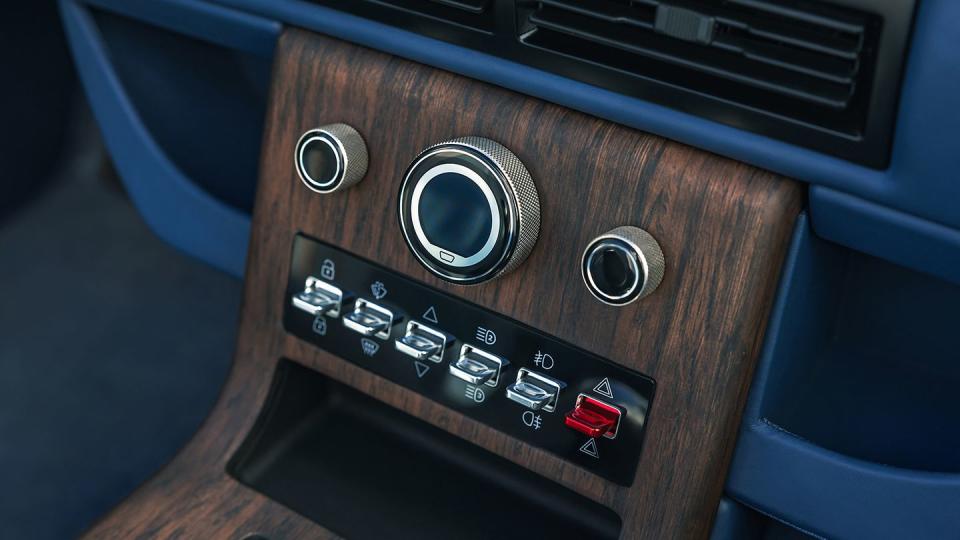Would James Bond Want a Range Rover Safari That Goes Electric?

Lunaz Design has converted a Range Rover Classic to 'Octopussy' Safari spec, complete with an EV powertrain.
The cabin has been updated with modern air conditioning and a custom center stack featuring an Android Auto and Apple CarPlay infotaiment screen, as well as a backup camera.
The Safari now produces 375 hp sent to all four wheels, powered by a 90-kWh battery, with Lunaz offering this basic, simpler conversion program for other Range Rover variants as well.
By now you could get just about every generation and model of Land Rover in electric form, with EV conversion specialists having catered to deep-pocketed enthusiasts who've always secretly wanted quieter vehicle operation, or were simply looking to future-proof their diesel workhorses.
But one version of the British classic that has remained without an EV conversion, at least until now, has been the two-door Range Rover cabrio, like the one seen in the 1983 James Bond film Octopussy.
British EV conversion specialist Lunaz has finally addressed this glaring omission by building just such a vehicle. And this one required more than just a powertrain swap, as you've noticed by now.
"With this Range Rover, we're doing something different," said David Lorenz, Lunaz founder. "We're showing that our incredibly detailed and exacting approach can be applied to more playful icons, so they can be enjoyed for their own sake."
The company has reinforced the body and chassis of this two-door model in the process of removing the roof, but also kept the basic design generally similar to the Range Rover seen in Octopussy.

The interior is a different matter. The Lunaz team has thoroughly updated the cabin when it comes to comfort and technology, adding a modern center stack and dash developed in-house featuring an Android Auto and Apple CarPlay infotainment screen also hooked up to the backup camera.
A modern air conditioning and heating system has also been added, operated by digital controls on a center console finished in Mocca Walnut, while USB-C charging ports for devices have also found their way on board.
The seats have been completely redesigned and retrimmed in soft leather paired with a waterproof and chlorine-resistant textile. Finished in Maya Blue, the Safari features a dark blue mohair convertible top.
"The interior alone was the product of more than 1000 collective hours of development and production," Lunaz notes.
When it comes to the powertrain, Lunaz has given the Range Rover Classic model a 375-hp electric motor driving all four wheels, adding new springs and adjustable dampers to the chassis as well. Lunaz has also added six-piston disc brakes up front and four-piston disc brakes out back to help bring the reengineered Rangie to a halt when needed.

But even with these additions the Safari retains the original model's approach, departure, and breakover angles.
A 90-kWh battery now powers the Safari, which should give it a range of just under 300 miles if you drive it carefully. But it's not the sort of thing that would get an official WLTP or EPA rating, so take this estimate with a generous helping of salt.
As you've probably guessed by now, this idea for such a vehicle did not arise from nowhere, but was requested by a Lunaz client, with the company adding that it represents "the most extensive interior development of any car" reworked by Lunaz.
As such, the company is silent as to how much money this example will actually cost the buyer, but the interior modifications that required two years of development and build time give a strong hint of the money involved.
We're hoping at some point such EV conversions will become more budget-friendly, so that owners of old Range Rovers can do a cassette-style swap that will also yield usable mileage, and not cost the same as a house.
For now, this sort of thing remains a money-no-object, boutique effort.
Will there be demand in the future for such EV conversions, or is this a passing fad? Let us know what you think.

 Yahoo Autos
Yahoo Autos 